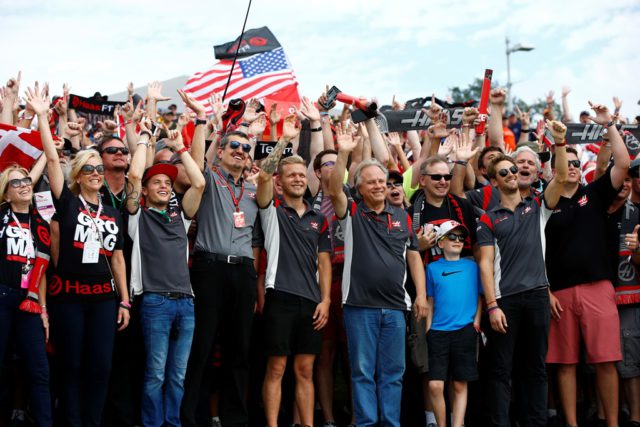Back-to-back eighth-place finishes in the constructors’ standings of the FIA Formula One World Championship has earned Haas F1 Team respect in the paddock. In its 2016 debut, the American team outperformed the factory Renault team (ninth), Sauber (10th) and Manor (11th) and then bettered McLaren (ninth) and Sauber (10th) as the Formula One grid shrank to 10 teams in 2017.
Contraction brought a heightened level of competition, with a technological arms race running rampant in Formula One. There is the battle for the top of the mountain between Mercedes, Ferrari and Red Bull, and in the foothills resides the midfield skirmish where Haas F1 Team competes with the likes of Force India, Williams, Renault, Toro Rosso, McLaren and Sauber.
All have seemingly bettered themselves for 2018, with each expecting an upward trajectory in the constructors’ standings
Gene Haas, founder and chairman of Haas F1 Team, does not expect to be in the camp of the latter. He formed Haas Automation in 1983 and in the 35 years since, turned it into the largest machine tool builder in North America with a footprint encompassing more than 60 countries and 1,300 employees.
Motorsports has played a key role in that growth, with Stewart-Haas Racing, the NASCAR team Haas co-owns with three-time Monster Energy NASCAR Cup Series champion Tony Stewart, having won two titles and 42 races, including last year’s Daytona 500.
That success led Haas to venture into Formula One
There, in addition to creating the first American team since 1986, he uses the worldwide platform to build Haas Automation into a premium, global brand.
Constant refinement is what drives Haas in business and in motorsports. That Haas’ two passions are intertwined is not a coincidence.
The serial entrepreneur and machine tool magnate’s formula for success is to find a challenge, create a good, efficient and cost-effective solution, and then repeat. Success in the machine-tool industry led to success in NASCAR.
Haas has taken that blueprint to Formula One, and with his third year as a Formula One team owner beckoning, Haas knows where his team needs to improve in order to grab hold of another rung in the constructors’ standings.
Your debut season was hard, but you found success. You could argue that your sophomore year was harder because there was pressure to at least maintain that success. What about year three? It seems everyone is positioned to improve drastically, meaning the ever-competitive midfield is going to become even more competitive.
“It looks like everyone is going to be better. We identified our weak spots and Guenther (Steiner, team principal) and I had a good heart-to-heart talk on that one in Mexico City about what direction we were going to take and how we were going to improve. It’s no secret we use a lot of Ferrari equipment, so we’re using them as our baseline. We need to be within a half-second of the Ferraris in order for us to be competitive. We weren’t last year. I would say we were a second to a second-and-a-half slower than the Ferraris. Overall, we were maybe two seconds off the pole qualifiers, so we need to knock a second off that if we really want to be competitive.”
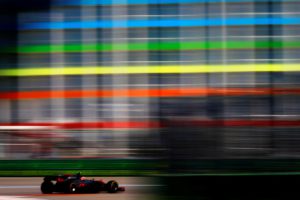 While car design remains relatively unchanged this year, there is a new rule that limits teams to three engines per year as opposed to the four engines they used last year. On top of that, there’s an additional race this year for a total of 21 races. Reliability is always important, but does this rule change further limiting the amount of engines you can use in a single season put an even greater emphasis on reliability?
While car design remains relatively unchanged this year, there is a new rule that limits teams to three engines per year as opposed to the four engines they used last year. On top of that, there’s an additional race this year for a total of 21 races. Reliability is always important, but does this rule change further limiting the amount of engines you can use in a single season put an even greater emphasis on reliability?
“I think it’s like anything else – the more seasons you have with an engine package, the more reliable it’s going to become. I have no doubts they can do the season with three engines. Plus, there’s not going to be this tremendous need for upgrades because the engine horsepower has somewhat plateaued. They are getting about as much performance out of the current dimensional package as you can. I don’t think Mercedes or Renault is going to be that much farther ahead or behind Ferrari. They are all within a half-a-percent of one other. I think from a reliability standpoint, the Ferraris are excellent.”
There has been talk this offseason about whether or not an American driver is ready to compete in Formula One. What’s your take?
“Well, I’m pretty sure I know where that talk came from. Guenther Steiner, our team principal, was asked about having an American driver in Formula One and, more specifically, with Haas F1 Team. He responded by saying something to the effect that it wasn’t at the top of our priority list, and things kind of took off in a bunch of different directions as people made a bunch of assumptions.”
“The fact is that we’re still learning here in Formula One, and bringing on a driver who needs to learn about Formula One probably isn’t the best thing for us or them. I felt like there were times last year where our drivers were better than our cars. So, we need to step up, but we know where we need to improve thanks in large part to the experience of our drivers.”
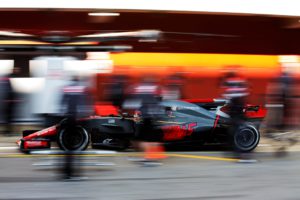 Gene Haas: “We’re not saying no to having an American driver, but the reality is that of the American drivers who have a super license and could actually compete in F1″
Gene Haas: “We’re not saying no to having an American driver, but the reality is that of the American drivers who have a super license and could actually compete in F1″
They should really be with a team that can serve as their benchmark rather than the other way around. Now, we fully expect to eventually be in that position – ideally, sooner rather than later – but this is only our third year and we need to improve in a variety of areas, and Romain Grosjean and Kevin Magnussen are playing a big part in that improvement because of their experience. They help us, rather quickly, determine if the course we’re taking is a proper one or if we need to re-think our approach. That experience is invaluable as we look to become a team that can eventually challenge for podiums instead of just points.”
“This debate about American drivers really isn’t a debate. I believe in American drivers – my NASCAR team is full of them, and we’ve won a lot of races and championships. Obviously, the discipline is different, but sure, there are competent American drivers who can compete in Formula One. But we’re not ready for that yet, and with the limited amount of testing, teams have, getting anyone up to speed who hasn’t already been a part of a development program would be hard. I think that’s the point Guenther was trying to make.”
How helpful is it to go into this season with the same driver lineup and, with the exception of the addition of the halo, a rules package regarding car design that is relatively unchanged?
“We’ve eliminated a lot of the variables where we knew we were weak, and we knew where we needed to focus. We need to be able to go to the majority of races and put the car down on the track and be fast. We’ve focused on what it’s going to take to get the cars to be consistent and to close that gap between the top cars.”
How did the pairing of Romain Grosjean and Kevin Magnussen work out and what can we expect from them in 2018?
“I’ve said it before – I thought our drivers were better than our cars in 2017. Grosjean is a very, very fast driver. His driving style is very different from Magnussen’s style. Grosjean is more hard-charging, braking and going through the turns. Magnussen is a little smoother going through those turns. They just have different driving styles, but they are both very aggressive and both want to win, and you have to have that kind of killer mentality to score points. You just have to. When the opportunity is there, you just have to go for it. That’s hard to find in drivers. They are all that way. They won’t give an inch to anybody and when it comes down to it, you really have to want to win, or at least score points. That’s what we have with our two drivers.”
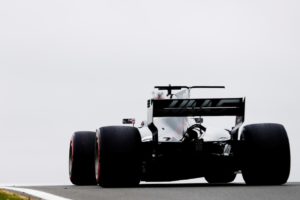 Haas F1 Team scored 18 more points in its second season than it did in its debut season thanks in large part to both drivers scoring points. Did each driver’s competiveness and ability to achieve points push each other to perform at a higher level?
Haas F1 Team scored 18 more points in its second season than it did in its debut season thanks in large part to both drivers scoring points. Did each driver’s competiveness and ability to achieve points push each other to perform at a higher level?
“Our drivers’ competitiveness works well, and it’s not a negative because they work well together. They know what they’re doing, so I think that they kind of help each other, but they are competing against each other. It’s pretty amazing how the two cars are almost always close to each other in qualifying and practice, so you know the drivers are extremely capable. If we give them fast cars, they’ll move right up the ladder.”
What would you like to achieve in 2018?
“We want to solve these technical issues that are holding us back. Tires are the toughest issue we have because you have to keep the tires in a certain temperature range, but how you keep the tires in that temperature range is how you handle your downforce and your drag and how you handle sliding the tires. The tires are very sensitive to downforce, overheating and sliding, but in order to get the tires right, you have to have the right chassis and the right aero. Without all of that working right, the cars become very difficult for the drivers and you can’t expect them to make up for a car that just doesn’t have the capability of holding the track.”
Group picture with my guys in front of the VF-17 (no it’s not the new 2018 @HaasF1Team car ) while getting my new seat fitting for 2018 @f1 season …not long now until you can discover our new car! pic.twitter.com/uMmjmUAd2V
— Romain Grosjean (@RGrosjean) February 7, 2018
Looking back on your second Formula One season, how would you assess it?
“It was a learning year. Our first year, everything was new and everything has to be mentally digested about how do we go about racing in Formula One. In the second year, we understood a lot more in terms of what we were missing, and it became obvious midyear that our cars just weren’t fast enough to really be competitive. Some tracks they were quick, but other tracks they weren’t, and the question was, ‘Why did that occur?’ and ‘What are we going to do about that in the future?’, and that’s really a big pivot point for us going forward – how to solve those issues.”
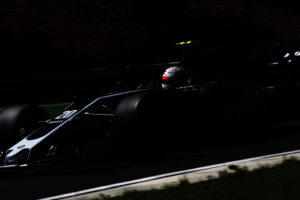 How was your second Formula One season different from your first?
How was your second Formula One season different from your first?
“In our first season, we were extremely lucky to do as well as we did because in the second year there were a lot of races that we just felt lost. You would think that in the second year we would’ve been better at that, but I felt that we were actually worse and it became more obvious about what we had to do to find what we were missing. If you don’t know how to solve some of these issues, you go out and you just have a really bad day, no matter what you do.”
“And that’s really frustrating because you’re supposed to be out there doing your Free Practice 1 and 2 and you should get better, but it’s like you would go out there and do Free Practice 1 and 2 and the third one would be worse and you’re going, ‘Wow, what are we missing here?, and we would ask, ‘Well, is it a driver issue?’, ‘Is it a car issue?’, ‘Is it a tire issue?’, and I think we’ve been able to narrow it down to determine it’s a car issue that effects the tires which makes the driver not able to perform.”
Were there some elements that you found to be easier, and were there other elements that ended up being more difficult?
“Nothing was easier. It was more difficult and I think it was more difficult from the standpoint that the competition was more intense. The first year it seemed like we had more teams that were having challenges. It seemed like in the second year a lot of those teams sorted out their problems and all of a sudden they got a lot faster. The spread between the top cars and the bottom cars when we first started was four to five seconds, and now it’s down to three seconds. The field is tightening up and everyone is getting better.”
Was there anything about your sophomore year in Formula One that surprised you?
“The surprising fact is that these very, very small differences in the cars can completely change the characteristics of how the car drives. We’re not talking a lot. The one issue is tires. If you get the tires a few degrees out of their window, the tires can almost change completely, and then once they are out of their window, how do you get them back in their window? The bigger teams are very aware of those issues and they spend a huge amount of their effort and time making sure those tires are where they need to be.”
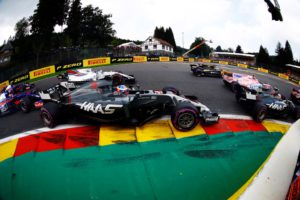 What was the highlight of 2017?
What was the highlight of 2017?
“We had two races where we scored double points – Monaco and Japan. Those were good and I was hoping that we could do better near the end of the year but, ultimately, we didn’t. I felt like we were 10 points shy of where we really needed to be, but it also brought into focus where those areas are that we need to work on.”
How do you think Haas F1 Team was perceived before the start of last year and what do you think its perception is today?
“Now we’re just one of the teams, to the point where if we’re in front of Lewis Hamilton or whoever, they don’t go, ‘Who are these people?’. They know who we are. I think it’s good. In two years, we’ve survived. We’ve shown we can compete at this level, and the teams around us were all within a few points of sixth, seventh and eighth there at the end of the season. That was an interesting place to be, and I’m sure the teams in front of us were very happy that they finished in front of us because now it’s like they have another competitor to deal with.”
Beyond the sporting challenge of Formula One, there was a business case for your company, Haas Automation, to become involved in Formula One. You said you wanted Haas Automation to become a premium, global brand via Formula One. While brands aren’t built overnight, do you feel that growing Haas Automation globally is on track thanks to Haas F1 Team?
“I would say half the time at machine tool trade shows, people want to talk about the car. People have a very big interest in the racing part of it and also from the machine tool side of it. So, it kind of brings it all together in terms of how they see us and the products we sell.
Motorsports plays a major role in Haas Automation’s marketing. How does Haas Automation use its endeavours in Formula One and in NASCAR to showcase its products?
“In racing, it’s all about performance, and that performance translates into winning. When you win, people notice, so that’s the marketing plan . If we can compete at these high levels, that gets us the notoriety we want for Haas Automation. On the marketing side of it, we bring customers to the races and that works really well because – especially in Formula One – it’s pretty much impossible to even get into the pits unless you know a team, so we’re bringing a lot of our special customers only to these racetracks. It makes them feel special, and that translates into their perception of us and how they relate to people in their industry.”
“I think it just kind of builds on itself that this is a top-notch team in association with a top-notch machine-tool builder, and that’s the whole thing – the association of quality, performance and winning machine tools. That’s led to some good B2B opportunities. We do it in NASCAR a lot, and a lot of our competing teams use Haas Automation equipment. We’ve had Formula One teams ask about how to procure equipment from us, and if we weren’t there, that’s probably something that wouldn’t have happened.”
Are your NASCAR endeavours focused on the U.S. market while your Formula One interests promote Haas Automation globally? Are you seeing customers follow both Stewart-Haas Racing and Haas F1 Team?
“At Haas Automation’s headquarters in Oxnard, California, we track website hits, and you can definitely see spikes when people will look at our machine tool site and then go to the racing part of it and want to keep up to date with what happened over the race weekend and, specifically, how we did in Formula One. There’s a lot of interest, and it’s good to keep people engaged – not just on the machine tool side, but on the racing side as well, and merging those things together.”
Is there any transfer of technology or methodology between Haas F1 Team and Stewart-Haas Racing and vice versa?
“We’re a NASCAR team and here we are doing Formula One. There’s a lot of similar technologies and I’ve even had a lot of people from the Formula One side wanting to know how NASCAR guys do this, so there’s a lot of interest. You have two sports that are at the top of their fields – stock car versus open-wheel racing – but they seem to have a lot of interest in how each of these entities have evolved over the years and what can be gleaned from the two series.”
You grew up in Youngstown, Ohio, attended college in southern California and started Haas Automation out of your garage. Haas Automation is now the largest machine tool builder in North America, your NASCAR team has won two championships and you built the first American Formula One team in 30 years. Looking back, are you able to appreciate the scope of your achievements or are you constantly looking forward?
“As soon as the last race is over, you have to prove yourself at the next race, and it’s a similar thing in the machine tool business in the sense that our customers are using these machines in all kinds of different environments and it’s very frustrating because as much as we design them and get them to do what we think the customer wants them to do, they make them do something we don’t think they are capable of and then we see the failures. Almost like in racing where you have all of these grand plans for the next year and then you find out that the competition is ahead of you, so it’s a challenge.”
“But I think that challenge, whether it’s in racing or in building machine tools, that challenge is what I thrive on – the environment is changing and I have to adapt to it and I have to make a better product. It really strains the brain to think, ‘OK, here is the challenge. Now, how do we adapt to it?’”
You own two race teams competing at the pinnacle of NASCAR and open wheel while simultaneously running a billion dollar company. How do you balance it all?
“It is a balance. It’s a constant challenge of testing all of your abilities – your stamina, your resources, your ability to outdo somebody else and win a race, and it’s very difficult.
“The NASCAR side works pretty well without me. Those guys know what they’re doing and have been doing it for a long time. We’ve won a couple of championships, so I have a lot of confidence in them. We’re still learning on the Formula One side. We don’t want to be in the mid-pack forever. We want to get on top of the mid-pack. That’s our goal.”
When did the racing bug bite, and when did you meld your passion for racing with machine tools?
“I was in high school when I went to work for LeGrand racecars. One of my starting jobs there was machining magnesium wheel for racecars. I was 16 years old when (Red) LeGrand said, ‘Here’s this lathe over here. I’ll show you how to make some wheels.’ So he showed me and gave me a couple of tips and I’d say a month later I was sitting there, machining wheels out of magnesium by myself. I could set the machines up and run the machines, so I was the magnesium machine guy there and that’s what I did.”
“It doesn’t take long until you get involved with the racers there. The highest form of racing at that time was Formula 5000. I actually went to the Long Beach Grand Prix in 1975 followed by the Formula One Grand Prix in 1976, which went on for almost 10 years. I saw some of that high-profile racing right after college.”






















